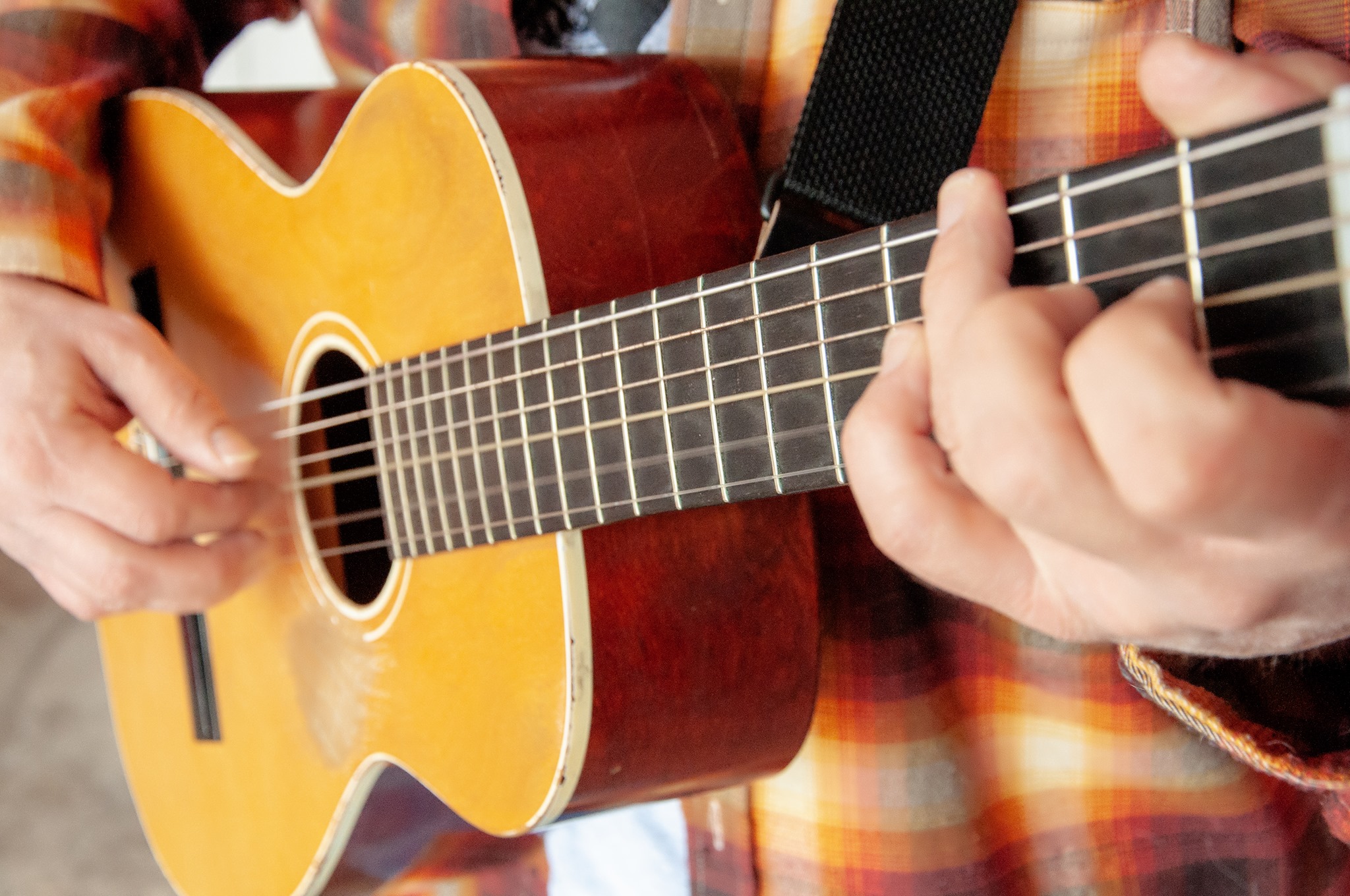Essential Tips to Create a Great Acoustic Guitar Live Sound
by Jessica Brandon
Acoustic guitar is one of the most versatile instruments you can play. It’s perfect for anything from small gatherings around a campfire to massive stadiums of 20,000 fans and everything in between. Because there are so many venues in which you can play acoustic guitar, it’s important to understand how to alter your setup to suit the space.
Here are five essential performance tips for acoustic guitarists to help you get the most out of your instrument and put on a great show.
1. Amplify Your Sound
If you’re playing a venue that’s bigger than your living room, it’s a good idea to amplify your sound. Acoustic guitars aren’t very loud. How do you expect to put on a great show if nobody can hear you?!
There are two ways that acoustic guitarists can project their sound to the audience: running a line directly into a PA or using an acoustic guitar amp.
Straight into the PA
Running your acoustic guitar straight into the venue PA system is probably the simplest way to project your sound to the screaming audience. If your guitar has a pickup and an input jack, all you need is a guitar cable. Plug your acoustic guitar directly into the PA and voila, everyone in the venue will be able to hear you.
If your acoustic guitar doesn’t have an electric pickup built in, you still have a few options. First, you can mic your guitar sound just like you would your voice. Position a microphone about where your hand strums the guitar. That way, it’ll pick up the acoustic sound of the guitar and project it through the PA speakers.
You can also install an electric pickup in your guitar’s sound hole. Many sound hole pickups are temporary, which means you won’t have to drill into your beloved guitar, and you can remove it after the show is over.
Acoustic Guitar Amp
For acoustic guitarists who don’t own a PA system, you can choose to get an acoustic amp. Yes, the term “acoustic amp” is an oxymoron, but acoustic amps are a great way to amplify your sound and create the perfect tone you’re looking for.
Just plop the amp on the stage, plug in your guitar, dial in your settings, and you’re ready to rock the house. You also have the added benefit of being in complete control of your tone. You won’t have to rely on potentially shoddy venue equipment or inexperienced (or nonexistent) sound engineers to dial in your tone.
Acoustic amps are also typically much smaller than complete PA systems, which will simplify your setup and help save your back from lugging around heavy equipment—especially if you’re not big-time enough to have a few roadies on hand.
2. Use a Preamp or DI Box/Pedal
Acoustic guitars—even electric/acoustic models—aren’t necessarily made to be plugged directly into an amp or PA system. There’s a certain amount of tone lost when an acoustic signal is transmitted through a piezo pickup. To keep that splendid, full, rich acoustic tone, it’s a good idea to use a preamp or a direct input (DI) box or pedal.
Using either a preamp or a DI will allow you to adjust different settings to create the perfect acoustic tone for your style:
- Volume
- EQ settings
- Reverb
- Chorus
- Delay
- Feedback reduction
- And more
Different preamps and DI boxes have different features. Find the one that best suits your style. For example, the BOSS AD-10 Acoustic Preamp is one of the best on the market, but it comes with all sorts of features and effects that might be unnecessary for some styles of acoustic guitar. If you don’t need fancy effects like chorus and delay, save some money and go with a preamp or DI box with fewer settings.
3. Understand Your Signal Chain
Signal chain is the order of your inputs and outputs. For example, your guitar signal goes from your guitar, to your effects, then into the amp or PA. That’s the signal chain. When it comes to acoustic guitar settings, order does matter.
Putting devices in the wrong order can wreak havoc on your acoustic tone. If your signal goes into an effects pedal before your DI, the DI will alter your tone with the effects already applied. That’s not what you want. It’s always best to go directly into your preamp or DI, then to your effects (which also should be in a certain order depending on what you use), and finally out to the PA or amp.
Make sure you take the time to understand your signal chain and optimize it to create your ideal tone.
4. Work with the Sound Engineer (if there is one)
Some venues (if you’re lucky) come with their own PA and sound engineer. In many cases, acoustic guitarists simply trust the engineer to do what’s best, instead of working with them to develop a specific sound.
If you’re playing a venue that has a sound engineer, take the time to work with them. You might think your guitar, preamp, and effects settings are perfect, but it could sound completely different out in the audience. Having someone who understands sound listen to you from afar will help you dial in that perfect tone before the show starts. There’s nothing worse than dialing in your tone by trial and error during a show! Plus, most sound engineers are happy to work with musicians beforehand. When the tone is right up front, it makes their job much easier during the show!
5. Check Stage Monitors Separately
Soundcheck isn’t the most fun part of playing a show, but it’s essential to get your tone dialed in. Many acoustic guitarists simply play a song or two with both the PA and the stage monitors together, make a few tweaks, and call it good. While it might make the boring soundcheck go a bit faster, having both the PA speakers and stage monitors running at the same time won’t do much for your tone.
When playing a live show, it’s always best to listen to your stage monitors separately from the PA speakers. What you want to hear on stage isn’t always what’s best for the audience. By listening to both pieces separately, you can dial in the perfect tone and volume that works for you on the stage and sounds best for the audience.
Once you have your stage monitors figured out, you can turn up the PA speakers and listen to everything together. That’s the best way to create the ideal tone for everyone.
Set Up Your Perfect Acoustic Performance
Amplifying an acoustic guitar is much different than any electrified instrument. To keep that unique acoustic tone, remember to use the right amplification methods, implement a preamp or DI, understand your signal chain, work with the sound engineer, and set up your stage monitors separately from the house system. When everything works together, acoustic guitarists can put on a great amplified performance without losing any of their rich acoustic tone.
For more information on the 18th Annual IAMA (International Acoustic Music Awards), go to: https://inacoustic.com/enter-here




